|
John Tyman's Cultures in Context Series NEPAL |
|
|
|
369-413 |
|
John Tyman's Cultures in Context Series NEPAL |
|
|
|
369-413 |
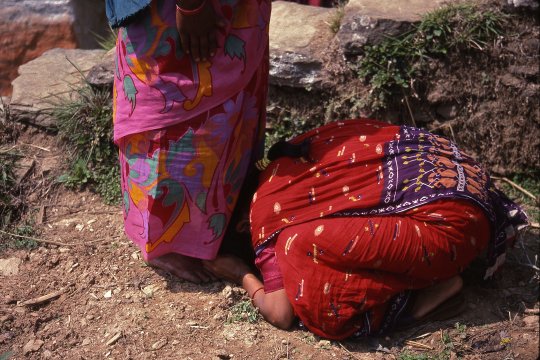 |
| 374. Bidhya bows before Gopal’s sisters and when Gopal encounters them he must do the same -- whether they are older or younger than himself -- though he will not bow before sisters-in-law |
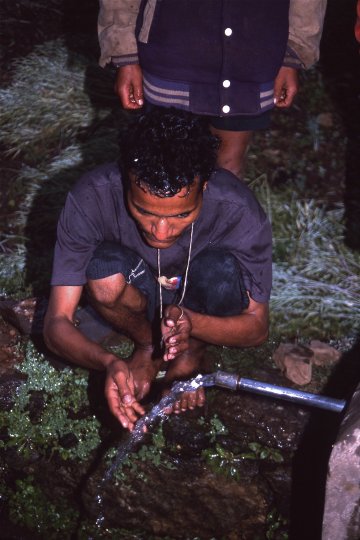 |
| 381. Gopal followed his wife's example, murmuring the mantra taught to him when he was initiated and clasping the sacred thread given to him on that occasion. |
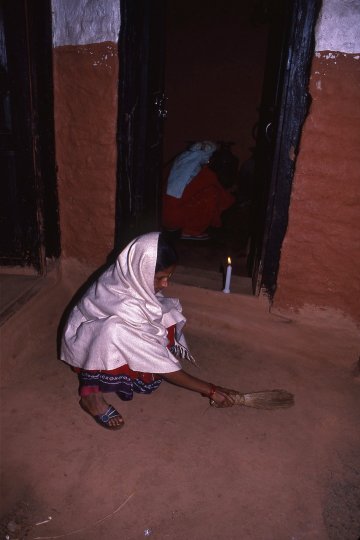 |
| 382. When the women return to their homes they will sweep out the kitchen and entrance way; working by the light of a candle while the rest of the family is still sleeping. |
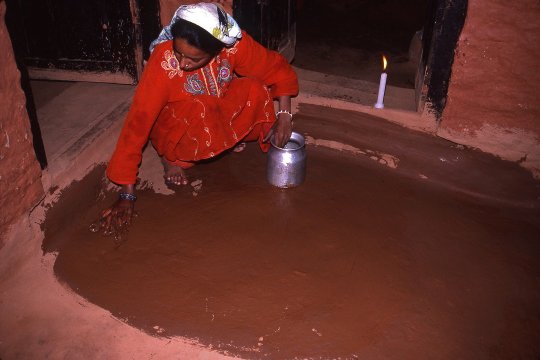 |
| 384. The threshold is of symbolic importance because crossing it means penetrating the intimacy of family life, so purifying the threshold is the symbolic equivalent of purifying the whole house. |
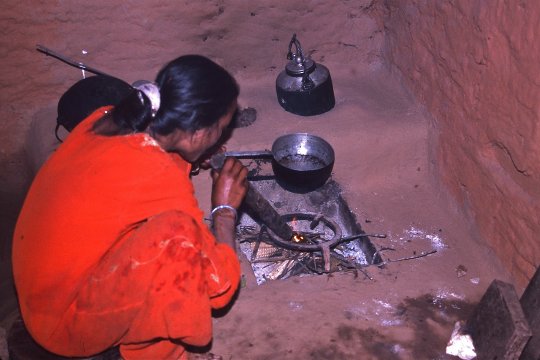 |
| 387. When she has scrubbed the hearth the woman will light the fire, using scraps of dried wood and corn cobs, and a bamboo tube to blow life into material that merely smoulders at first. |
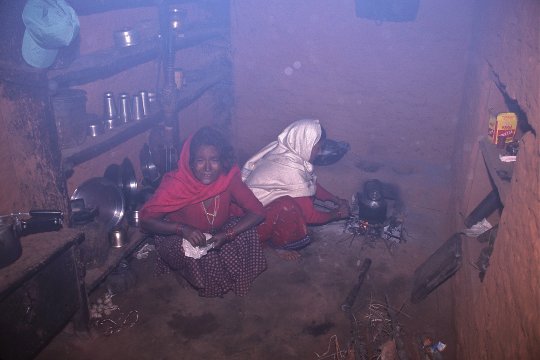 |
| 388. This fire will be used to heat water for tea. Since there is no real chimney, just a small hole in a nearby wall, the room will soon be filled with smoke. But there is also work to do outside. |
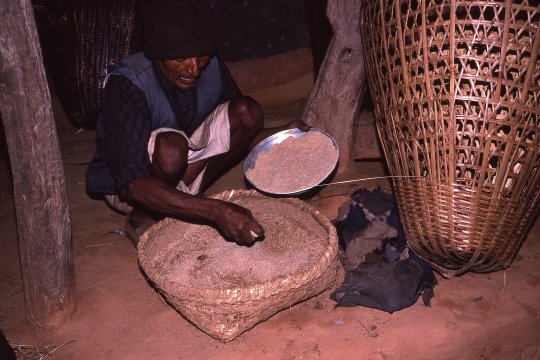 |
| 392. Gopal’s father now get’s some chaff for the buffaloes, and may be fresh hay also from a nearby stack. The chaff is used to prepare a mash. |
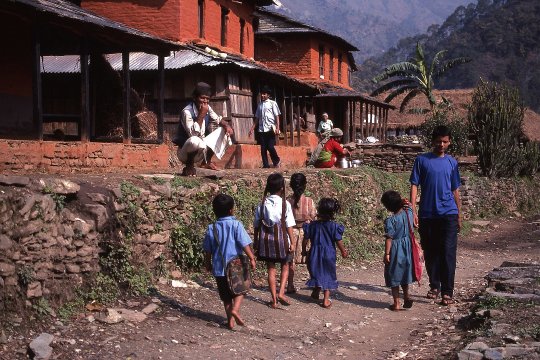 |
| 398. The family will eat together at around 9.30 a.m. and then head off ... the children to school, their father to the fields, and their mother to the next chore on her list. |
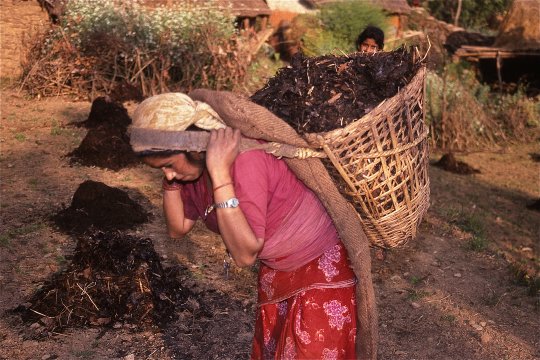 |
| 407. If it is time to plough fields and plant crops, manure will have to be backpacked from the compost heap to the fields and spread around, so it can be dug into the soil. |
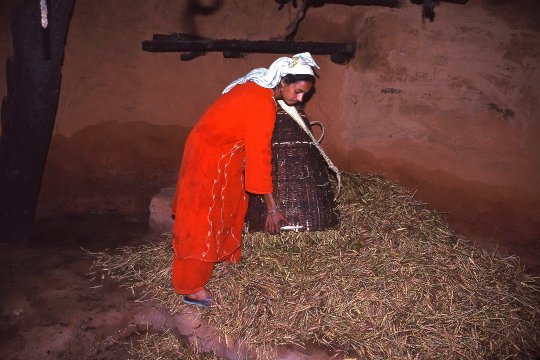 |
| 408. And if it is harvest time, after they have finished work in the fields, the women will have to store the crop in the attic if it needs drying -- as is usually true of wheat. |
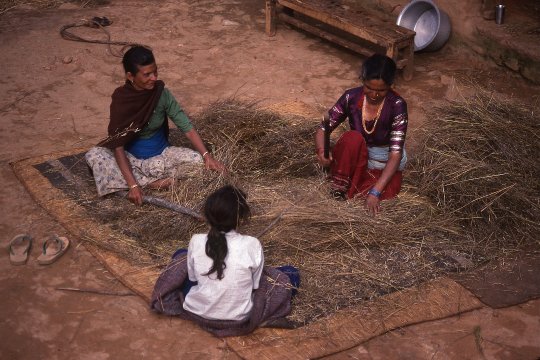 |
| 409. It will then need to be threshed and winnowed. Men may help with both these tasks, but not always. |
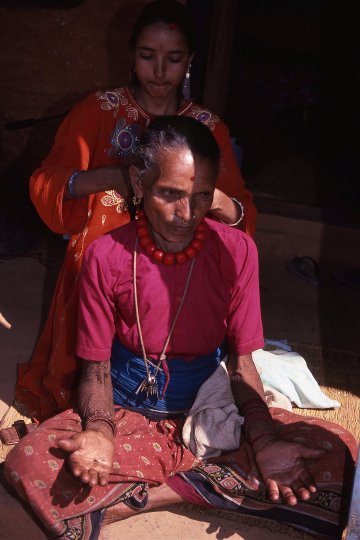 |
| 411. A second person is also helpful when, in a quieter moment, a woman’s hair needs to be braided. And this time slot can also be used for meditation and prayer. |
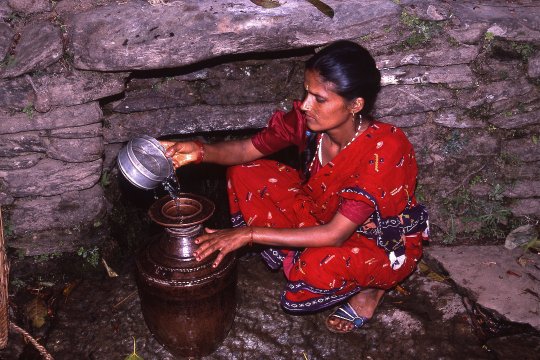 |
| 412. When they work in the fields all day women get back just in time to cook the evening meal, but they usually have to return to the spring first, for more water. |

![]()
Text, photos and recordings
by John Tyman
Intended for Educational Use
Only.
Contact Dr. John Tyman at johntyman2@gmail.com
for more information regarding
licensing.
![]()
www.hillmanweb.com
Photo processing, Web page layout,
formatting and hosting by
William
Hillman ~ Brandon, Manitoba ~ Canada